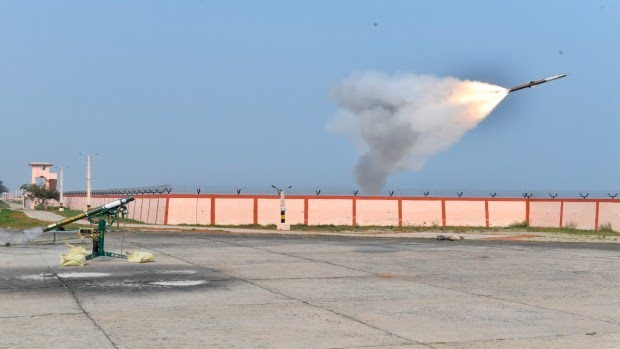Indian Army Seeks Advanced Air Defence Systems with New VSHORADS Procurement. On June 11, the Indian Army initiated a significant move to bolster its air defense capabilities by issuing a request for information (RFI) for the procurement of new Very Short-Range Air Defence Systems (VSHORADS).
This step is a crucial part of the Army’s strategy to enhance its ability to counter various aerial threats, which include fighter jets, transport aircraft, helicopters, and unmanned aerial vehicles (UAVs).
The new systems are expected to come with advanced features such as grip stock/tripod launchers, sophisticated sight systems for both day and night operations, and state-of-the-art missiles.The Army’s RFI specifies that these VSHORADS will be procured in two distinct configurations: a man-portable version and a vehicle-mounted version.
This dual approach aims to ensure that the systems can be deployed effectively across the diverse terrains of India, including high-altitude areas, plains, riverine regions, deserts, coastal areas, and maritime environments.
The new missile systems are required to have infrared (IR) or imaging infrared (IIR) seeker systems with either cooled or uncooled medium-wave camera modules, ensuring their effectiveness in various conditions and against multiple threat types.

Historical Context and Development
The decision to acquire new VSHORADS follows the Defence Acquisition Council’s (DAC) approval of the procurement in January 2023. The Defence Research and Development Organisation (DRDO) has been at the forefront of this development since 2020.
The VSHORADS being developed by DRDO, particularly through the Research Centre Imarat (RCI) in collaboration with other DRDO laboratories and Indian industry partners, marks a significant advancement in India’s indigenous defense capabilities.
The new VSHORADS incorporate several innovative technologies, making them more compact and easier to handle. Among these technologies are miniaturized Reaction Control Systems (RCS) and integrated avionics, which have been successfully tested and validated.

The missiles are designed with powerful motors to engage low-flying targets over short distances effectively. This makes them highly suitable for the diverse operational scenarios envisioned by the Indian Army.Defence Minister Rajnath Singh has lauded the efforts of the DRDO team and the soldiers involved in testing these new systems.
He emphasized that these modern weapons will considerably enhance the Indian military’s operational capabilities, providing a robust shield against aerial threats.
Strategic Importance and Future Prospects
The push for new VSHORADS is part of a broader effort to modernize India’s air defense systems, which have relied on older systems like the Igla missiles from the 1980s. The modernization is crucial for maintaining strategic advantage, especially given the current geopolitical climate.
In response to rising tensions with neighboring China, India has recently acquired 216 Russian Igla-S MANPADS, including 24 launchers. However, a larger order involving 5125 missiles, 1276 launchers, and the associated technology transfer for local production is still awaited.
The envisioned VSHORADS are not just a replacement but a significant upgrade, offering improved portability and advanced targeting capabilities. The procurement of these systems is expected to fill critical gaps in the Army’s current air defense setup, ensuring a more responsive and resilient defense posture.
Furthermore, there are plans to develop variants of the VSHORADS that can be deployed on helicopters such as the Light Combat Helicopter (LCH) and the Rudra. These helicopters currently utilize French missiles, but an indigenously developed missile system would enhance operational synergy and reduce dependence on foreign technology.
This move aligns with India’s broader policy of self-reliance in defense manufacturing, a strategic necessity in the current global defense landscape.In conclusion, the Indian Army’s new RFI for VSHORADS is a strategic move to enhance its air defense capabilities across multiple terrains and threat scenarios.
With advanced features and indigenous development, these systems are poised to significantly strengthen India’s defense posture, ensuring readiness and resilience against contemporary and future aerial threats. The ongoing efforts by DRDO and the support from the Indian government highlight the commitment to modernizing the nation’s military infrastructure and achieving greater self-reliance in defense technology.
Also read:
India to Build Third Aircraft Carrier Enhancing Naval Strength



